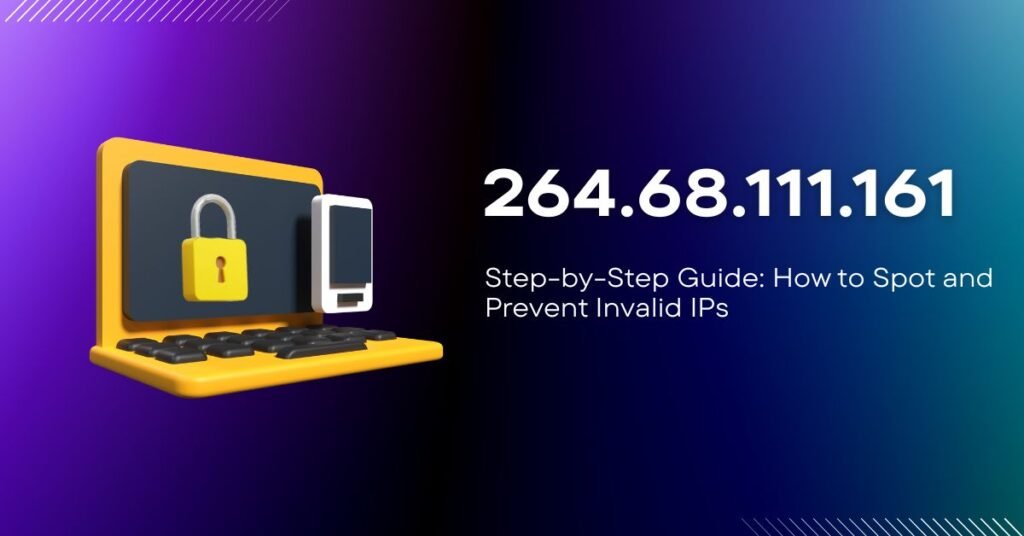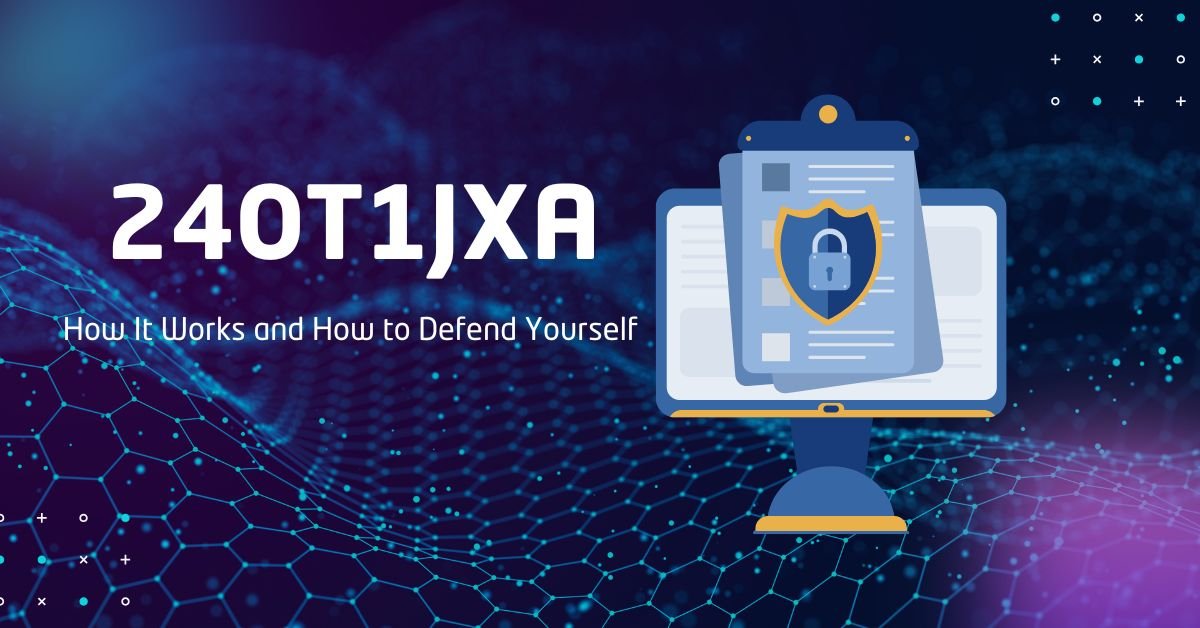Have you ever wondered how incredible as small as a number string could crash your business systems or untidiness with your online experience? Let’s talk about 264.68.111.161 an IP address that looks normal, but really hides a huge red flag. In today’s ultra related world, understanding how IP addresses work is not just for techies anymore. It’s vital for everyone who uses the internet, especially if you run a business.
In this article, we’ll break down what 264.68.111.161 in fact means, why it’s invalid, and how ignoring something like this can lead to cybersecurity risks, connectivity failures, and financial losses.
Let’s dive in and yes, we’ll keep it easy to understand.
What is 264.68.111.161 and why Is It a Problem?
At first look, 264.68.111.161 seems like a normal IPv4 address a set of four numbers estranged by dots. But there’s a catch.
Here’s a rapid refresher: In an IPv4 address, each number (called an octet) must be between 0 and 255. That’s the basic rule of the internet’s house. But in 264.68.111.161, the very first number, 264, breaks that rule.
So what happens?
It makes the complete IP invalid. Your network, devices, and software can’t use it. It’s like typing the wrong home address into your GPS it won’t get you anywhere.
Real-life analogy:
Imagine giving a celebrity your phone number with one wrong digit. They can’t call you. Same with invalid IPs computers can’t speak, causing disruptions.
Why Would an Invalid IP Address Even Show Up?
It may sound weird, but unacceptable IPs sneak into systems more often than you’d expect. And not always by mistake.
Here’s how:
- Human error someone by mistake types 264 instead of 192 during setup.
- Old software Legacy apps don’t always validate IPs correctly.
- Testing and development Developers might use fake IPs to replicate a network.
- Cybercriminals Hackers deliberately insert malformed IPs to confuse detection systems.
How 264.68.111.161 Can Wreck Your Network
You might think, “So what? It’s just a incorrect number.” But here’s the real business impact:
- Website downtime
- Broken internal systems
- Failed VPN connections
- Email disruptions
- Massive safety loopholes
Let’s say your employee tries to log in distantly and their VPN configuration has 264.68.111.161 by mistake. Nothing works. They can’t admission files, send emails, or support clients.
And now your IT support line is blowing up.
Cybersecurity Risks of Invalid IP Addresses
Invalid IPs like 264.68.111.161 isn’t just annoying they’re dangerous.
Hackers use them to:
- Spoof lawful addresses
- Bypass basic firewalls
- Exploit validation flaws
- Launch Advanced Persistent Threats (APTs)
You’d believe your security system would ignore invalid IPs but some don’t. They may log them as trusted sources or fail to raise alerts at all.
Why Understanding IPs Is More Important Than Ever
Today, we depend on cloud services, remote work, and always on internet. That income even a small misconfiguration like 264.68.111.161 can cause:
- Email outages
- Database reserve
- VPN connection issues
- Compliance failures
- Angry customers
It’s like having a faulty bolt in an airplane wing it doesn’t seem like a big deal, awaiting it crashes the system.
Step-by-Step Guide: How to Spot and Prevent Invalid IPs

Here’s what you (or your IT team) can do to vicious circle invalid IP addresses before they cause chaos.
Step 1: Audit Your Network Settings
Use tools like:
- ipconfig or ifconfig
- Online IP validators
- Project software like SolarWinds, ManageEngine, or Infoblox
Check every router, firewall, server, and workstation.
Step 2: Train Your Team
Teach staff to know correct IP formats. Don’t let someone type 264 when they meant 192.
Step 3: Automate IP Management
Use IP Address Management (IPAM) tools. They help you:
- Allocate IPs properly
- Prevent overlaps
- Spot invalid entries
- Generate reports
Step 4: Monitor in Real-Time
Apply network monitoring systems that can:
- Flag invalid IP attempts
- Log suspicious activities
- Alert admins instantly
Check out this list of IP monitoring tools.
264.68.111.161 vs Valid IPs – A Quick Comparison
| Feature | 264.68.111.161 | 192.168.1.1 | 10.0.0.5 |
| Validity | ❌ Invalid | ✅ Valid | ✅ Valid |
| Network Function | 🚫 Breaks things | ✅ Works fine | ✅ Works fine |
| Security Risk | 🔥 High | 🟢 Low | 🟢 Low |
| Business Use | 🚫 None | ✅ Internal use | ✅ Enterprise |
| Support Cost | 💸 Expensive | 💸 Minimal | 💸 Minimal |
Best Practices for Safe IP Address Management
To keep your business safe and sound:
Use Private Ranges like:
- 192.168.0.0/16 (Home and office networks)
- 10.0.0.0/8 (Large project)
- 172.16.0.0/12 (Mid size companies)
Avoid Public Ranges unless you have proper DNS and firewall rules
Block doubtful or malformed IPs
Regularly update firmware on routers and firewalls
Always test IP changes in a sandbox environment
How to Protect Your Online Identity Using IPs
As an individual, your IP address is your digital footprint. Hackers, advertisers, and still your ISP can see what you’re doing.
To stay safe:
- Use a VPN to mask your IP
- Enable firewalls
- Avoid sketchy public Wi-Fi
- Change your IP regularly (via router restart or dynamic DNS)
- Disable remote router management
Learn how to protect your digital privacy with this step-by-step VPN guide.
Quick Anecdote: When a Developer Broke Everything
A junior developer once used 264.68.111.161 as a placeholder while coding a test environment. Nobody noticed. Later, during making migration, the invalid IP got copied into the live database settings.
- The result?
- The app failed
- Customers couldn’t log in
- The team spent 6 hours debugging
Moral of the story? Test data should never be fake IPs unless properly labeled.
Business Impact: The Cost of Ignoring Invalid IPs
Let’s talk numbers.
| Impact Type | Average Cost |
| Downtime (per minute) | $5,600 |
| IT Hourly Rate | $150 – $300 |
| Lost Productivity | $25,000+/day |
| Compliance Fines | $50,000 – $3M+ |
Rapidly, validating IPs doesn’t seem optional, does it?
Emergency Response Plan: When You Spot 264.68.111.161
Immediate Actions (0–15 mins)
- Flag and separate the IP
- Notify stakeholders
- Check recent changes
Root Cause Analysis (15–60 mins)
- Inspect configs and logs
- Determine origin
- Escalate if outside actor involved
Fix and Monitor (1–4 hours)
- Replace with valid IP
- Test all systems
- Monitor transfer patterns
Post-Mortem
- Document what went wrong
- Update SOPs
- Train staff
Future-Proofing with IPv6
IPv4 is limited. With billions of devices online, we’re organization out of space. That’s why IPv6 is the future.
Benefits:
- More address space
- Better routing
- Improved security
- Native mobile support
Businesses should start migrating to IPv6 or at least make systems dual stack (supporting both formats).
Conclusion
264.68.111.161 may look harmless, but it represents a major blind spot in digital operations. Whether you’re organization a business or just browsing at home, understanding and organization your IP address can be the difference between smooth sailing and total chaos.
So ask yourself:
“If amazing as small as an IP can shut down my systems… what am I doing to prevent it?”
- Your next steps?
- Audit your network
- Use trusted IP organization tools
- Educate your team
- Protect your IP from misuse
Because on the internet, your IP address is your identity and you want to make sure it’s forever valid, secure, and optimized.
FAQs
Q: Why is 264.68.111.161 invalid?
A: The first octet (264) exceeds the IPv4 limit of 255.
Q: Can hackers use invalid IPs?
A: Yes, for spoofing and bypassing filters.
Q: How do I check if an IP is valid?
A: Use tools like WhatIsMyIPAddress or terminal commands like ping and ipconfig.
Q: Will switching to IPv6 help?
A: Yes, it provides more addresses and built-in security features.





